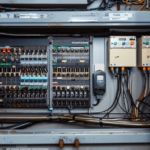Nowadays a lot of people are faced with such a problem as a lack of memory. It has led to the appearance of storage RAIDs. Not only big organizations but also home users exploit this type of data saving. However, the thing is, these storages are not always reliable. Even with the use of the best RAID system, you cannot be confident in it.
For this reason, it is worthwhile to monitor the state of the array. Nevertheless, in the case of data loss, the chance of its recovering will be still present. You can do it yourself or apply to a specialized company such as Data Recovery in Denver.
What is RAID?
RAID is a technology that improves the performance and resiliency of your personal or business storage system. This system uses several disks to store the same data to protect it in the case of a disk failure. In general, RAID storage systems consist of several discs that work separately.
If you have one of the disks failing, it is best to back up critical data immediately and then, replacing one of the drives, perform a rebuild of the array.
What are the most known raid types?
There are different types of RAID, but the most common are arrays of levels 0, 1, 10, 5, 50. Recently, there has been an increasing interest in the sixth level.
RAID 0 use alternate write. It is built of two or more drives. Information is recorded on all disks of the array in blocks of a specific size. Files that are one block in size are evenly distributed over two or more drives. Besides, due to the lack of redundancy or duplication of data, when one of the disks fails, it is impossible to recover information without using data from a failed drive fully.
Redundant Array of Inexpensive Disks 1 use the mirroring technology. It is built with two disks and information is simultaneously written to both drives. Each CD is a complete copy of its fellow. In case of failure of one of the disks, the array remains operable.
RAID 10 is the combination of level 0 with level 1. There are used at least 4 disks. It can remain operational even when one of the components of its RAID 0 fails.
RAID 5 is also very popular. Its main advantage is the distribution of information blocks across all disks of the array. The creation of such an array requires at least three disks. The parity blocks are used to calculate the missing information when one of the drives that make up the array fails. Thus, if one of the disks is lost, the data is not lost, and the array can continue to work.
So in the case of RAID data loss, it is worth it to specialized companies because with the wrong click, and you can lose the files forever.





